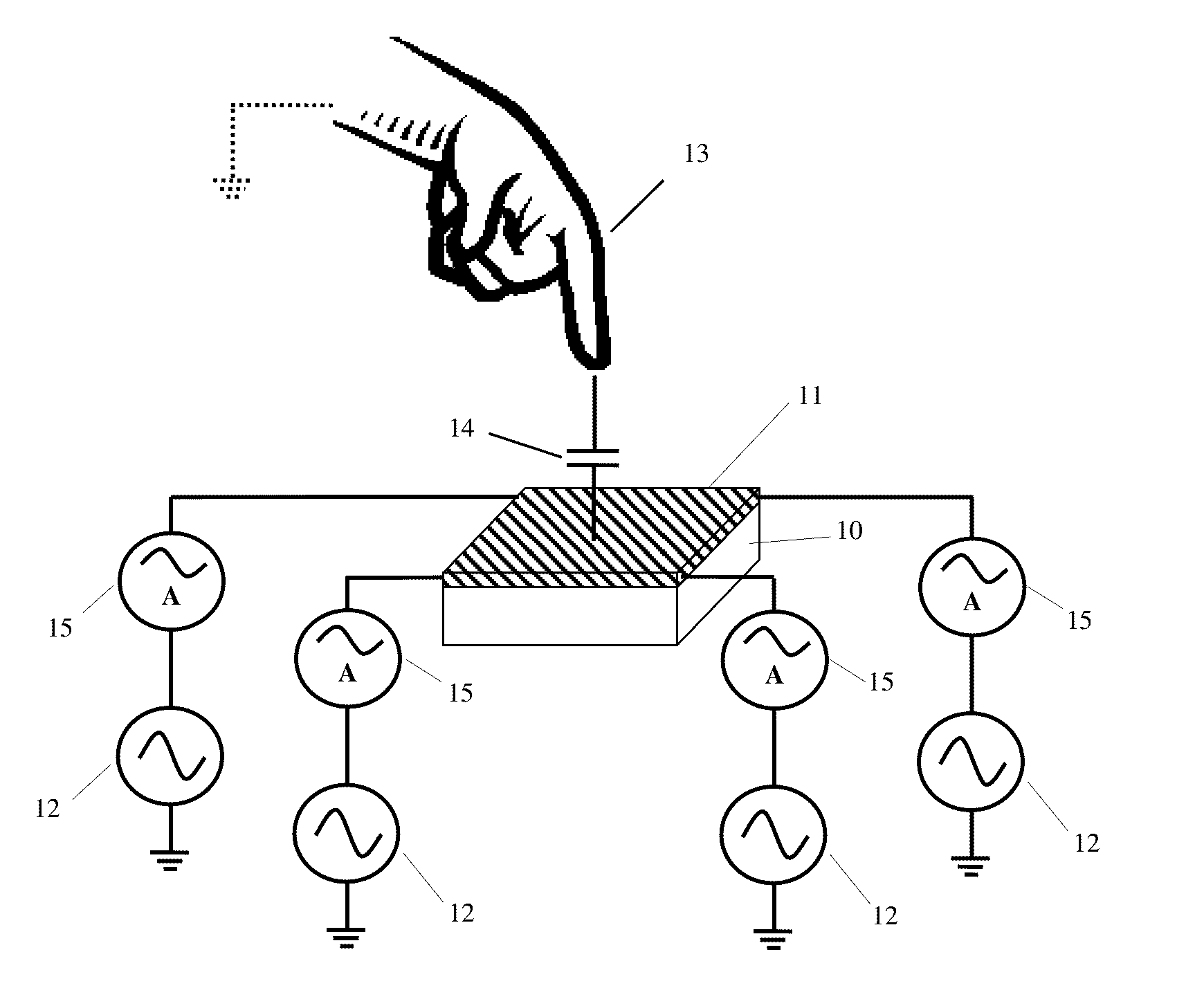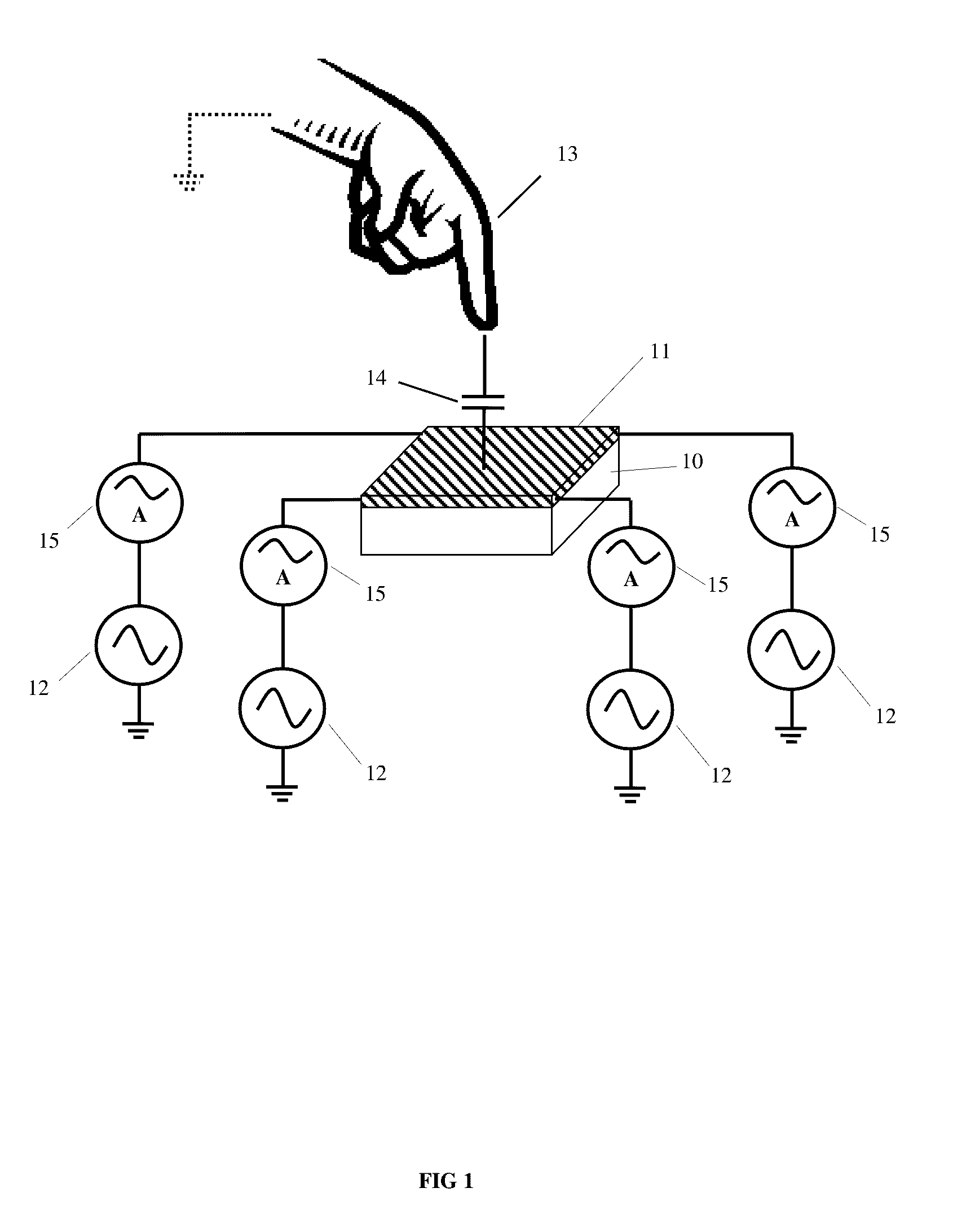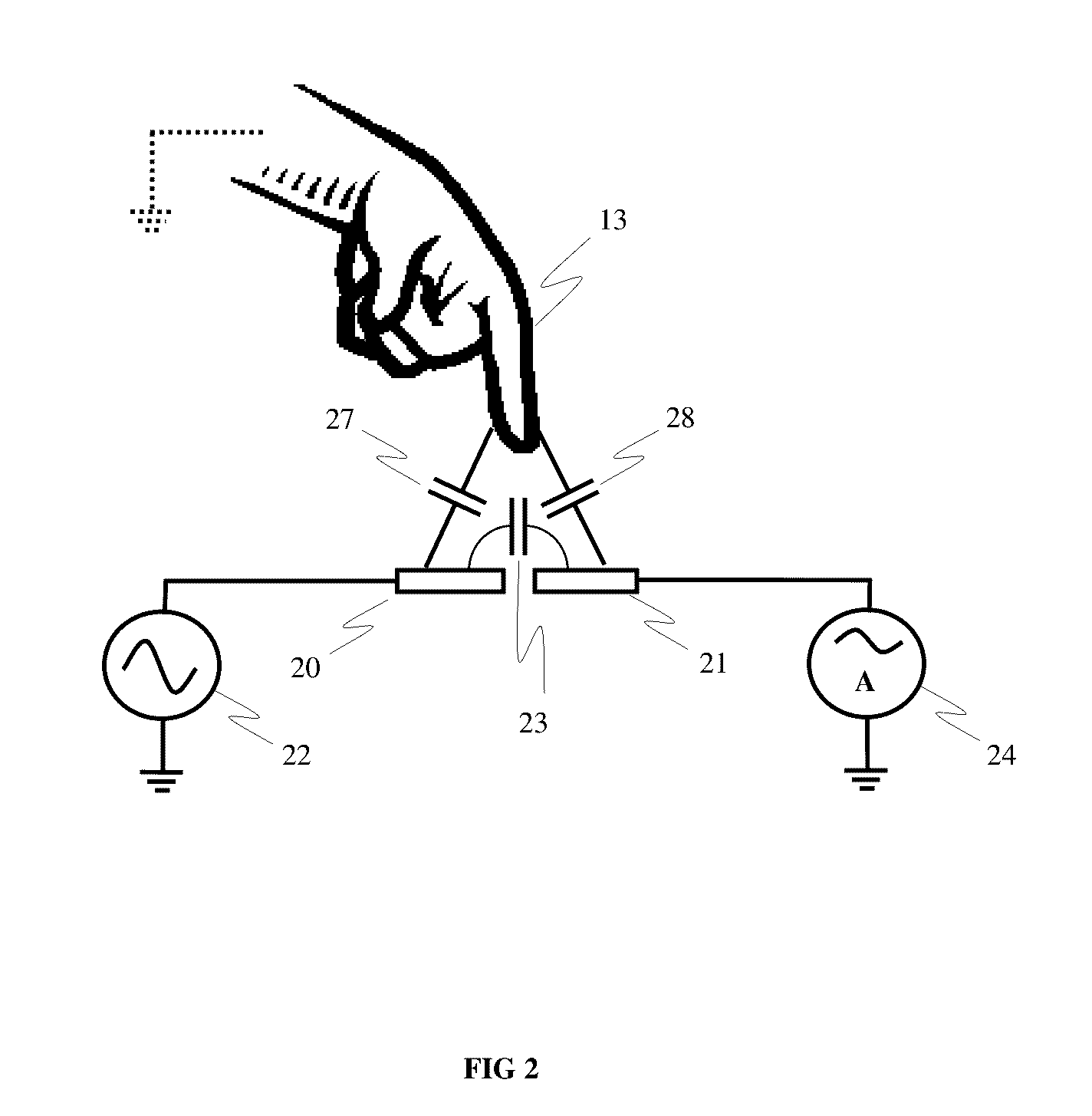Capacitive touch panel with balanced parallel driving
a capacitive touch panel and parallel driving technology, applied in the field of capacitive touch panel devices, can solve the problems of reducing the dynamic range of the sensor, affecting the performance of the touch panel, and unable to detect multiple simultaneous touch input events, so as to maximize the dynamic range and improve the signal-to-noise ratio.
- Summary
- Abstract
- Description
- Claims
- Application Information
AI Technical Summary
Benefits of technology
Problems solved by technology
Method used
Image
Examples
second embodiment
[0150]In accordance with the invention, a method is provided to create a drive matrix suitable for measuring with high dynamic range the capacitances of an electrode array with more than one drive electrode in each electrode element. An exemplary arrangement of electrode array in accordance with the present embodiment is shown schematically in FIG. 10A. An exemplary arrangement of an electrode element in accordance with the present embodiment is shown in FIG. 10B. The electrode element includes a pair of drive electrodes 601 and a sense electrode 604. Different parts of the same drive electrode may be connected by connecting wires 613, 614 and contact holes 612. Each drive electrode pair 601 includes a first drive electrode, drive electrode A 602, and a second drive electrode, drive electrode B 603. As shown in FIG. 10B, the two electrodes 602, 603 are arranged symmetrically around each drive electrode such that the first drive electrodes is adjacent to the sense electrode whilst th...
first embodiment
[0159]To meet these requirements the drive matrix D3 of the present embodiment may, for example, be constructed by applying a well-known Sylvester type construction method using a primary drive matrix D of dimension N×N as illustrated in FIG. 12. The primary drive matrix D may be constructed using the method described previously for this invention.
[0160]It is well-known that the signal-to-noise ratio of a touch panel may be improved by using a differential sensor circuit to measure the current generated on the sense electrodes. A suitable differential sensor circuit is disclosed, for example, in International Patent Application PCT / JP2012 / 006680 filed on 18 Oct. 2012. Further it is known that more than one sense electrode may be provided in each electrode element for the purposes of improving SNR or measuring the height of the input object above the touch panel surface. For example, FIG. 13 shows a known arrangement of an electrode element that comprises a sense electrode pair 701 a...
fourth embodiment
[0161]In accordance with the invention, a method is provided for measuring with high dynamic range and maximum achievable signal-to-noise ratio the capacitances of an electrode array with more than one sense electrode in each electrode element. As shown in FIG. 14, an array of electrode elements 100 including a set of drive electrodes 108 and sense electrode pairs 701 may be connected to a sense unit 800 which includes a differential sensing apparatus. The differential sensing apparatus may include first multiplexer circuits 810, second multiplexer circuits 820 and differential sensing circuits 830. The sense electrodes may be connected to the sense unit as illustrated such that the first sense electrodes 702 are connected to the first multiplexing circuits 810 and the second sense electrodes 703 are connected to the second multiplexing circuits 820.
[0162]Although the invention has been shown and described with respect to a certain embodiment or embodiments, equivalent alterations a...
PUM
 Login to View More
Login to View More Abstract
Description
Claims
Application Information
 Login to View More
Login to View More - R&D
- Intellectual Property
- Life Sciences
- Materials
- Tech Scout
- Unparalleled Data Quality
- Higher Quality Content
- 60% Fewer Hallucinations
Browse by: Latest US Patents, China's latest patents, Technical Efficacy Thesaurus, Application Domain, Technology Topic, Popular Technical Reports.
© 2025 PatSnap. All rights reserved.Legal|Privacy policy|Modern Slavery Act Transparency Statement|Sitemap|About US| Contact US: help@patsnap.com



